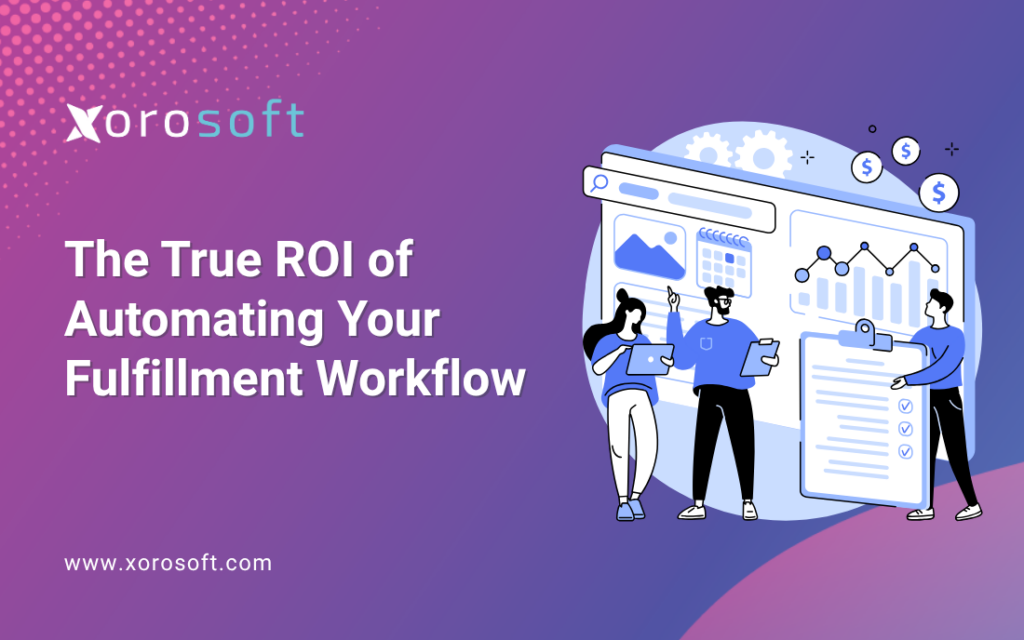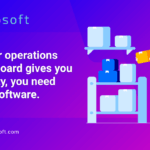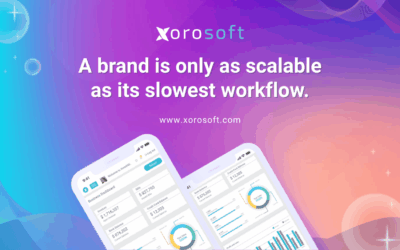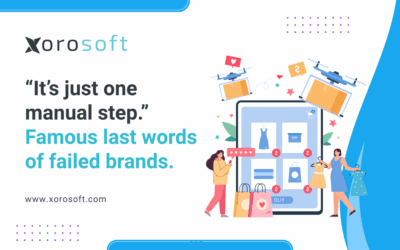
How Ecommerce Fulfillment Automation Drives Real ROI for Modern Brands
Ecommerce fulfillment automation is transforming how fast-growing brands scale their operations. You didn’t build your ecommerce business to manage spreadsheets and late shipments—you built it to grow and deliver value. Yet as orders surge, fulfillment often turns from excitement into chaos.
It’s not that your team is inefficient; it’s that manual processes simply don’t scale. That’s why automation has become the key to predictable, profitable growth. With the right system in place, your operations run smoothly, and your time shifts back to where it belongs—building your brand.
Why Ecommerce Fulfillment Automation Solves Operational Chaos
At first, manual fulfillment feels manageable. You print orders, pack them, and update spreadsheets. But as volume increases, small errors begin to multiply.
A single mistyped SKU can trigger a chain reaction — a wrong item shipped, an unhappy customer, and a return that eats your margins. Moreover, disconnected systems make it worse. Your Shopify orders, accounting platform, and warehouse tools rarely stay perfectly aligned.
Each missing sync or delayed update forces your team into reactive mode. Therefore, instead of working on growth initiatives, your operations team spends hours patching the system by hand.
Furthermore, slow cash flow becomes an invisible drain. Every unshipped order delays revenue recognition, and every delayed invoice extends your cash conversion cycle.
Over time, these frictions compound into a problem that no amount of extra labor can fix.
How Automation Creates Predictability and Control
Ecommerce fulfillment automation gives you back what growth has taken away — time, clarity, and confidence.
Imagine that every order automatically routes to the right warehouse or 3PL partner. Stock levels update in real time, and your finance system reconciles automatically. You no longer wait for reports or depend on manual uploads. Instead, your entire operation becomes transparent and self-correcting.
In addition, automation provides measurable control. When fulfillment happens automatically, you can predict your delivery times, staffing needs, and costs with remarkable accuracy. As a result, your business gains the stability required for long-term scaling.
This shift doesn’t just make operations smoother. It changes how your brand grows. You stop reacting to problems and start building proactive strategies.
The Real ROI of Ecommerce Fulfillment Automation
Let’s translate automation into tangible business impact.
In manual environments, pick accuracy typically hovers around 94–96%. Once automation is introduced, accuracy frequently exceeds 99%. As a result, fewer returns, fewer customer support tickets, and lower reshipping costs follow.
Similarly, order cycle time drops dramatically. While manual fulfillment may take two to three days from purchase to ship, automated routing often reduces that to same-day or next-day turnaround. Consequently, your customers receive faster deliveries, and satisfaction scores rise.
Inventory turnover also improves. Automated syncing means you can carry less safety stock without risking sellouts. That frees up working capital, which shortens your cash conversion cycle from 50 or 60 days to closer to 30.
Finally, labor cost per order declines. Rather than hiring additional staff, your existing team handles more orders efficiently. Over a few months, those efficiencies add up to structural profit — not just temporary savings.
Seven Practical Steps to Start Fulfillment Automation
Automation doesn’t have to be a massive project. The key is to move gradually while measuring impact.
1. Audit Your Workflow
Start by documenting every step from order placement to delivery. Identify points where manual input causes delays or errors. For example, track how long it takes to process an order and how many times data gets re-entered manually. This creates a clear baseline for improvement.
2. Integrate Your Systems
Next, connect your ecommerce platforms, inventory tools, and accounting software. Modern ecommerce fulfillment automation systems make this easy. Once connected, data flows automatically between platforms, ensuring that inventory, orders, and payments stay in sync.
3. Automate Order Routing
Then, set up rules to automatically send each order to the optimal fulfillment location. You can base these rules on SKU, region, or carrier. As a result, you reduce both shipping time and cost.
4. Improve Inventory Accuracy
Enable real-time stock updates. When levels drop, your system can trigger low-stock alerts or automatic purchase orders. Therefore, you eliminate stockouts and reduce overstock simultaneously.
5. Connect Operations and Finance
Automate financial reconciliation so that each sale, return, and shipment updates your accounting software instantly. Doing this ensures your financial view always matches your operational reality. In turn, it shortens your monthly close and strengthens forecasting.
6. Optimize Labor and Warehouse Flow
Once your workflows stabilize, measure your operational output. Monitor orders fulfilled per labor hour, and adjust warehouse layout or processes accordingly. Because automation reduces manual handling, even small optimizations have a compounding effect.
7. Review and Refine Consistently
Finally, set up a weekly review rhythm. Look for trends — are fulfillment times shrinking? Are costs per order falling? Each cycle gives you insights to fine-tune your automation and scale confidently.
Real Results: A DTC Brand’s Fulfillment Transformation
Consider a mid-sized apparel brand that once shipped about 300 orders a day from two warehouses. Their seven-person operations team relied heavily on spreadsheets, email threads, and manual order batching. As order volume grew, errors climbed, and cash flow lagged.
After implementing ecommerce fulfillment automation, they connected Shopify, their warehouse system, and accounting tools under one integrated dashboard. Order routing became automatic, inventory updated in real time, and finance reconciliation happened daily.
Within 90 days, results were striking.
They scaled order volume to 1,200 per day without adding staff.
Shipping time dropped from almost three days to just over one.
Cash conversion improved from 55 days to 32.
Overall monthly operating costs fell by 34%.
Because the system handled repetitive work, their team shifted focus to brand growth — launching new products, improving packaging, and building partnerships. Consequently, automation didn’t replace jobs; it elevated them.
Five Days to Launch Fulfillment Automation
You can begin small and see results quickly. Here’s a simple five-day roadmap.
- Day 1: Map your entire fulfillment workflow and identify pain points.
- Day 2: Connect your ecommerce platform, ERP, and financial tools.
- Day 3: Build your first automation rule for order routing.
- Day 4: Test order accuracy, speed, and data sync.
- Day 5: Launch your live automation workflow and monitor KPIs.
Within one week, your first version of automated fulfillment can be running — giving your team instant relief.
Metrics That Demonstrate ROI
To track impact, focus on a few metrics that clearly show progress.
First, measure pick accuracy and order cycle time. Both directly affect customer satisfaction. Next, evaluate inventory turnover and cash conversion cycles to confirm that working capital is improving. Finally, measure labor cost per order to ensure scalability without added overhead.
When these metrics trend upward, you’re seeing the real return on your investment in ecommerce fulfillment automation.
Building a Reliable Fulfillment Future
Automation gives leaders peace of mind. Because routine work runs smoothly, you gain time for higher-value projects — marketing, product development, and strategic growth.
Furthermore, automated fulfillment builds customer trust. Orders arrive faster, communication improves, and refunds process smoothly. These experiences turn first-time buyers into loyal advocates.
In a competitive market, this reliability becomes a serious advantage.
Choosing the Right Automation Platform
Not every system fits every business, so choose your tools carefully. Look for solutions that integrate with your current setup and scale easily as you grow.
Key factors include:
-
Ease of use for non-technical teams.
-
Scalability for multi-warehouse operations.
-
Real-time reporting across fulfillment and finance.
-
Reliable onboarding and customer support.
Explore verified reviews on G2 to compare systems. If you run Shopify, consider Xorosoft ERP, which simplifies setup and automates fulfillment efficiently.
Refocus Your Energy on Growth
Ultimately, ecommerce fulfillment automation frees your team from constant operational chaos. Moreover, it gives you the time and clarity to focus on real growth.
Instead of fixing errors or managing spreadsheets, you can plan campaigns, expand to new markets, and improve customer experience. As a result, your brand grows faster and more sustainably.
In addition, automation improves customer trust through faster, more accurate deliveries. Consequently, loyalty and repeat sales rise naturally.
Therefore, now is the best time to act. Explore top-rated ERP systems on G2 or discover how Xorosoft ERP on Shopify simplifies automation.
If you’re ready to see real results, Book a demo here and experience the impact of automation firsthand.









